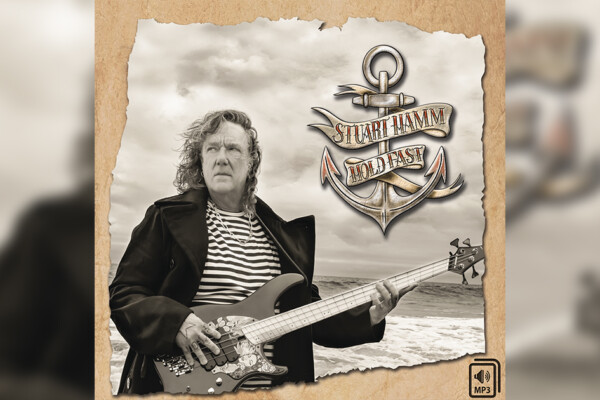Bass Transcription: Stu Hamm’s “Going to California”
This month’s transcription is Stu Hamm’s live performance of the Led Zeppelin classic “Going to California”, which can be heard (and seen) here:
You’ll need to detune your E-string to D in order to play this piece.
This performance of the song opens with a chord consisting of an open low D-string and A and D harmonics played at the seventh fret of the D and G-strings. Stu plays these notes with the volume on his bass down, then brings up the volume, fading in the chord. Throughout the intro section of this piece the low D should be allowed to ring beneath all of the harmonic figures. There are some sliding harmonics ideas featured in this section, which can be hard to execute cleanly: the trick is to slide the fretting fingers without pressing the strings down too hard – as you slide you’ll have to apply a little more pressure than you would normally use to play harmonics, but not much more. This section moves into a chordal fingerpicking section (bars 18 – 25). It is recommended that you fret the A with your second finger, the E with your fourth, and the F# with your first.
At letter A the main melody enters, and is played as a descending line on the D-string, starting at the G at the seventeenth fret. The notes of this simple melody are played against an open G-string, which is plucked between some of the melody notes as shown in the score. This creates a chordal backdrop for the melody. This melody is embellished at letters B and C.
At letter D a new theme begins, moving to a chord of D minor, which is a stark contrast to the rest of the piece, which is in D major! Again, the low D should ring throughout these bars. In bars 55-57 we have a classic Stu Hamm move – bending and tapping chord tones: Stu bends the F into an F# at the end of bar 55, then follows it with a tapped D higher on the same string. He then plays an Ab, and bends it slowly up to an A, before tapping an F# at the 23rd fret of the G-string. Those familiar with Stu’s previous work will recognize this idea from songs such as “Black Ice”.
At letter E Stu returns to the chordal fingerpicking section, but embellishes it with additional melodic and chordal parts. As with most sections of this song, you should allow the low D-string to ring freely in this section.
Letter F is a return to the melody section, and features a great descending crotchet triplet lick in bars 75-77. Here, Stu plays an inversion of a D chord – F# and D a sixth apart, then switches to a G chord, G and B (bar 75). The notes in the D chord are played with the first and fourth fingers, while the notes in the G chord are played with the second and first fingers. Stu then takes this two chord idea and repeats it moving down the neck in intervals of a tone, played in a crotchet triplet rhythm.
At letter G there is a return to the D minor idea from letter D, but this time using a different inversion of the chord, higher on the neck. This section is repeated at letter H, the end of which features a large bend from G at the 24th fret of the G-string, up to an A! As you’ll see in the video, as he bends the note, he uses his right hand to reach behind the fretted note and assist the bend by pulling the string upwards.
The song ends with a slower reading of the main theme.
There are many performances of this song on YouTube, and of course a longer version on Stu’s fifth solo album Just Outside of Normal.
Stuart Clayton writes for and runs Bassline Publishing, a small company who specialize in bass guitar tuition and transcription books. Check out basslinepublishing.com for more.





Thanks! Desde Argentina mi mas profunda gratitud.
bel sito, molto interessante……tornerò :-)
errore a 2:25 mistake at 2:25.